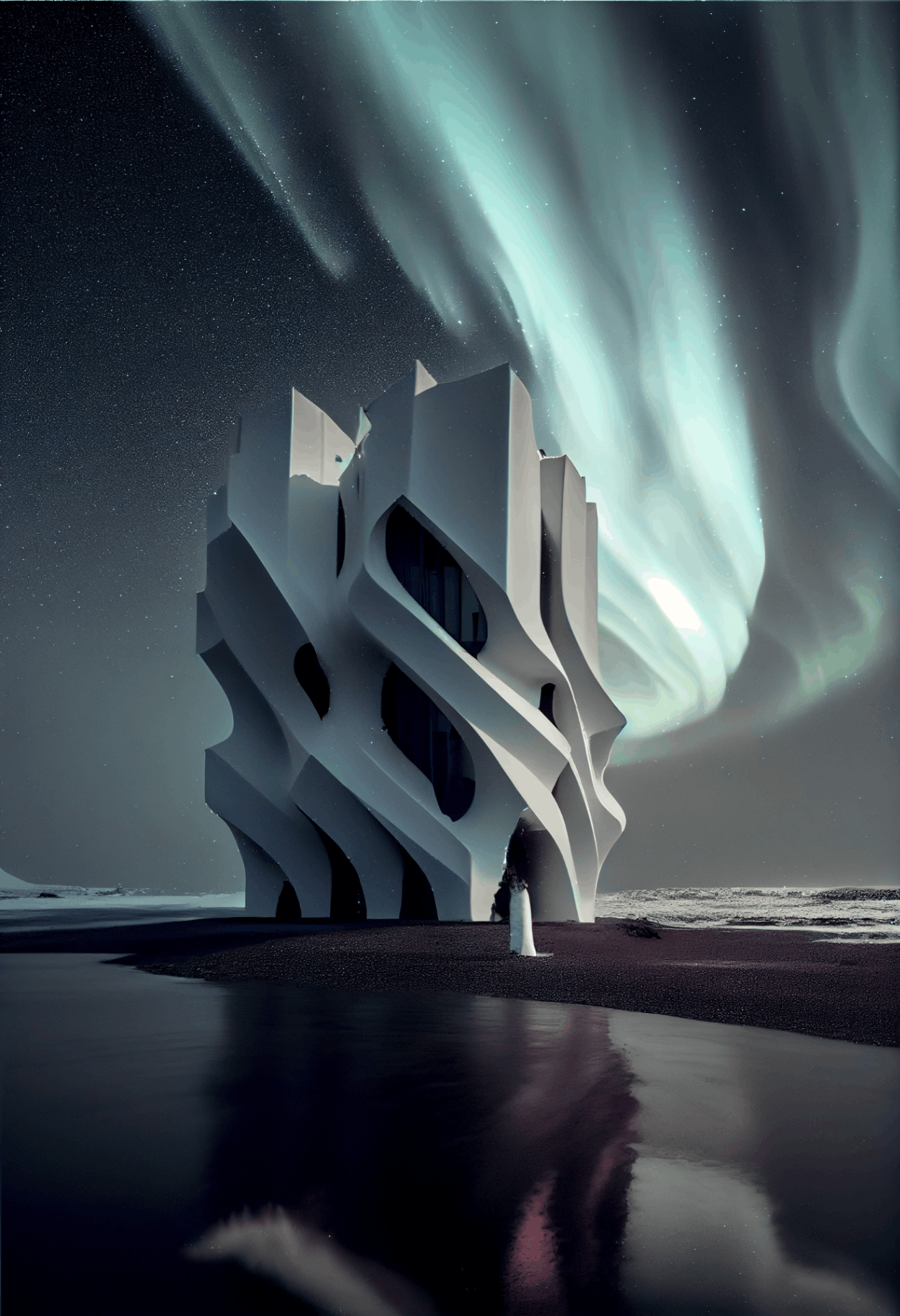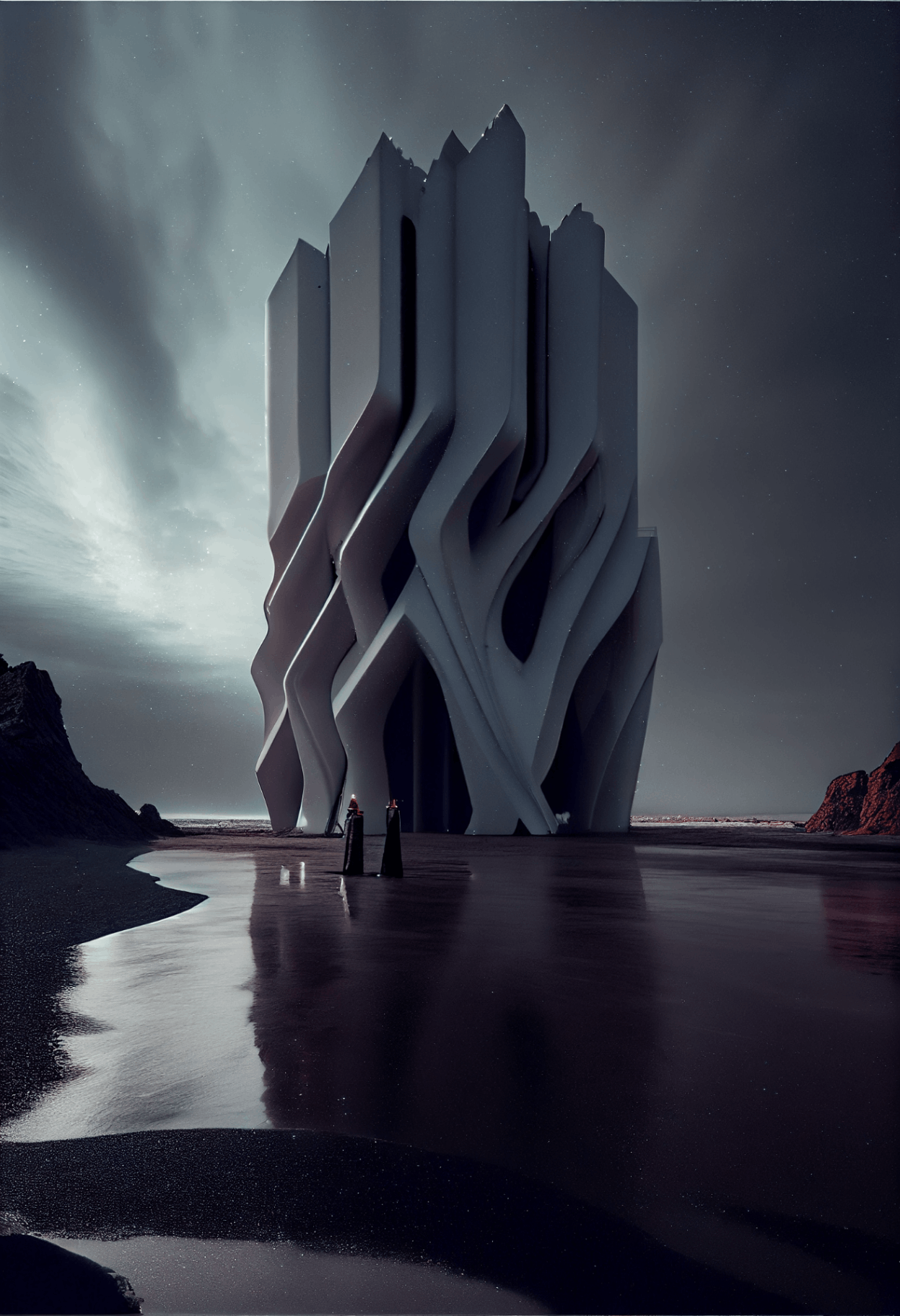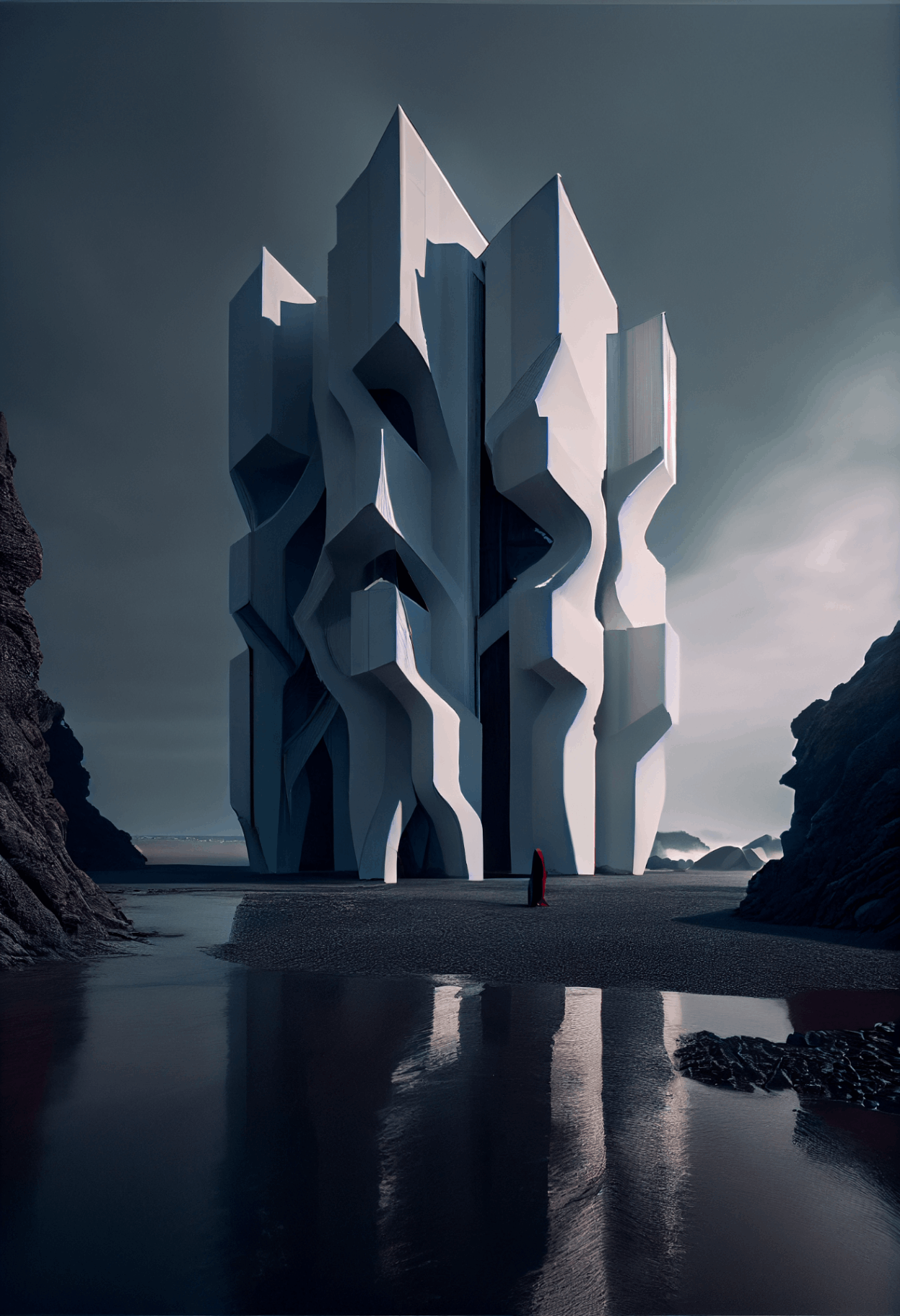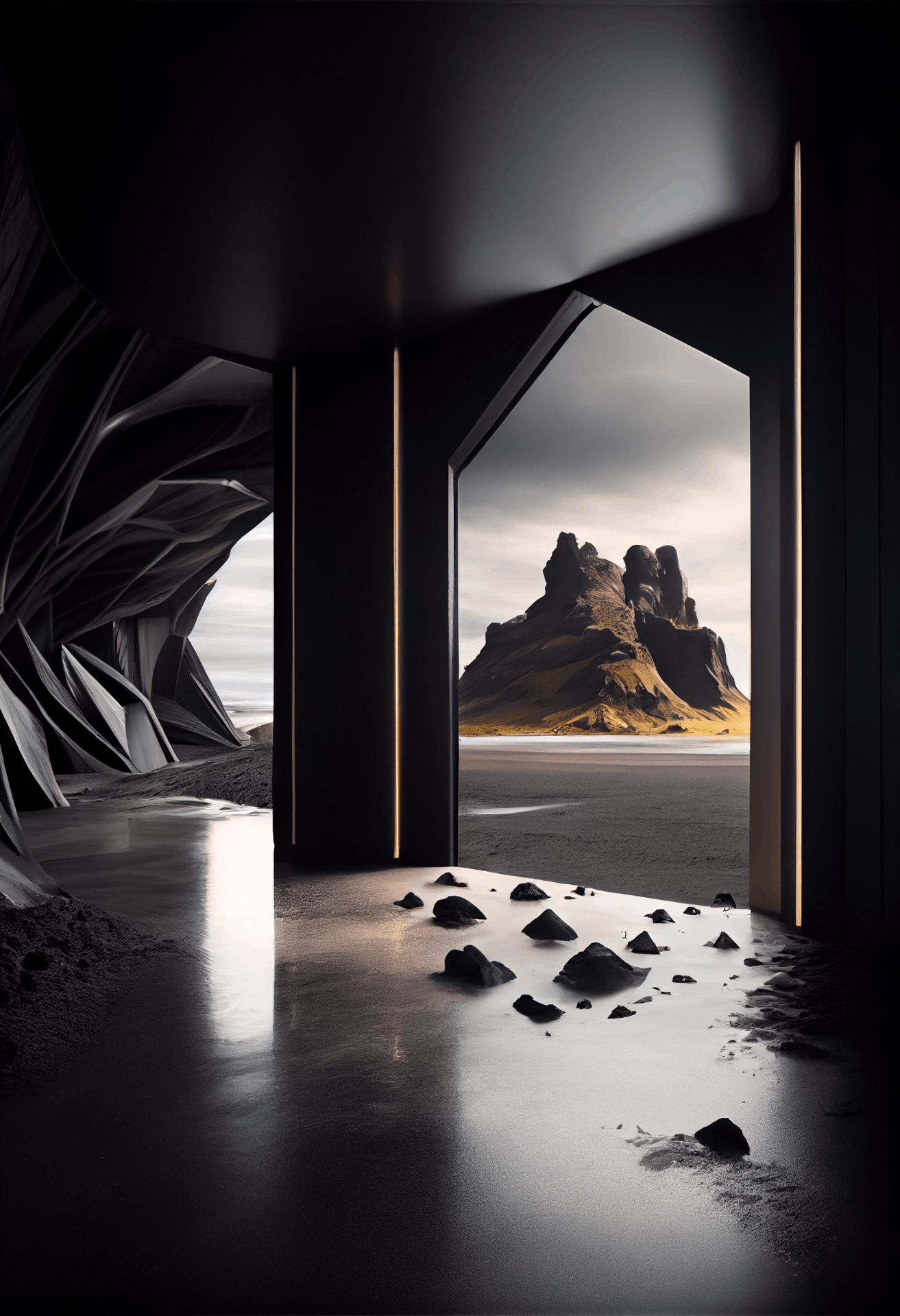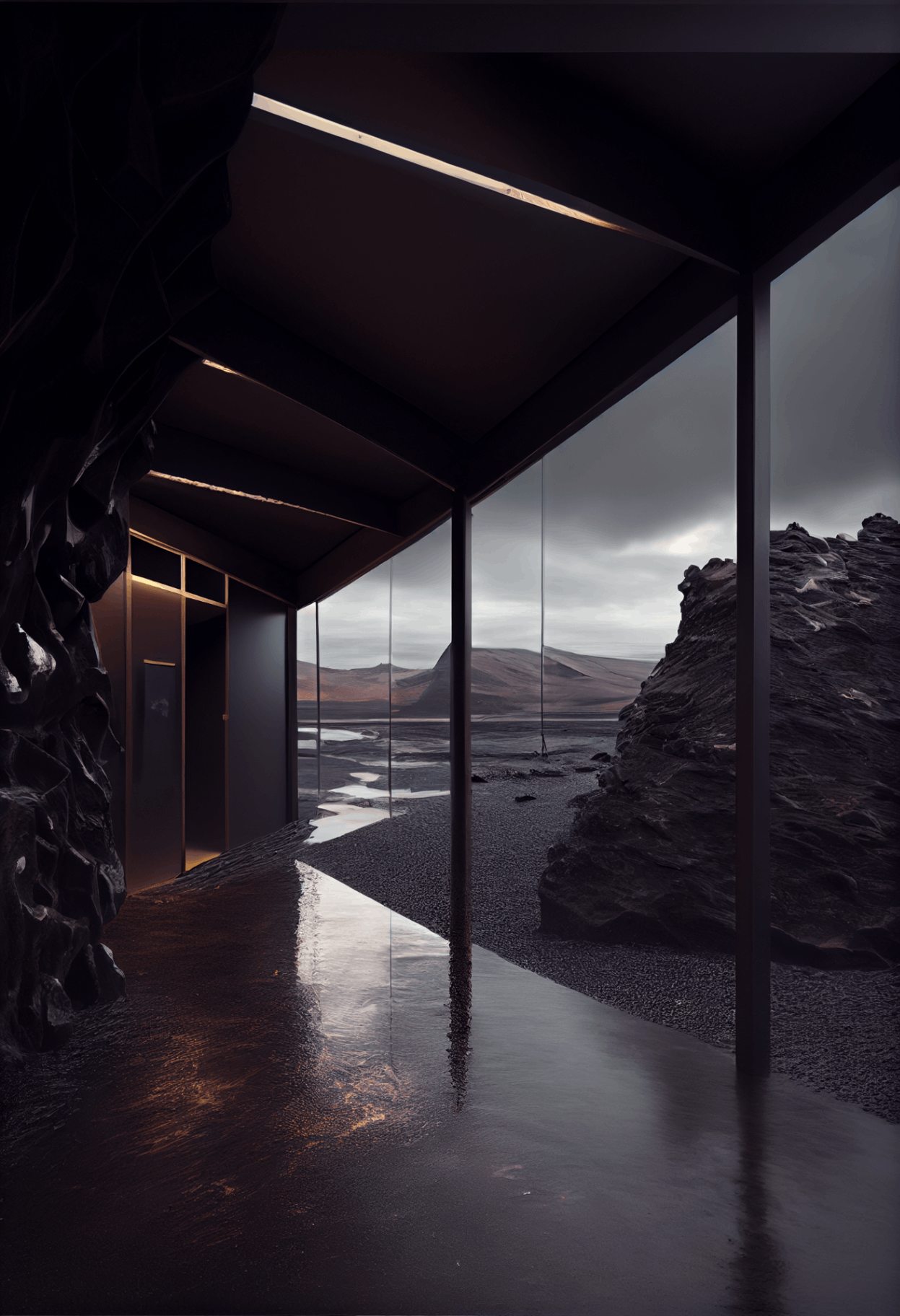Back
Reynisfjara Safn
Year: 2022
Reynisfjara is a black sand beach located on the south coast of Iceland, near the village of Vík í Mýrdal. It is known for its incredible natural beauty, including towering basalt columns and the Reynisdrangar sea stacks. The beach is also a popular spot for observing birdlife, including puffins during the summer months. Reynisfjara is said to be home to several mythical stories and legends. One of the most popular legends associated with the beach is that of two trolls, named Reynir and Finnbogi. According to the legend, the trolls were trying to drag a three-masted ship to shore, but they were caught by the first rays of the sun and turned into stone. The ship is said to be the Reynisdrangar sea stacks, and the trolls are said to be the two stacks located closest to the shore. An exterior architecture inspired by icebergs and beach waves could incorporate a curvy design to mimic the natural shapes and forms found in these elements. Icebergs are known for their unique and irregular shapes, characterized by sharp angles, and curved lines. These shapes can be incorporated into the architecture of the building through the use of curved walls, undulating rooflines, and other design elements that mimic the irregular shapes of icebergs. Beach waves are known for their smooth and fluid movement. This movement can be incorporated into the architecture through the use of curved lines and flowing forms. The building's exterior could feature a series of undulating waves, mimicking the movement of the waves on the beach. The curvy exterior could also be used to create a sense of movement, making the building appear as if it is in motion, like the waves and icebergs. This would be a unique and dynamic approach to the architectural design, that could give the building a sense of fluidity and movement. It would be a unique way to reflect the natural beauty of Reynisfjara. It would be a great way to create an architectural design that seamlessly blends into its surroundings and provides a unique visual experience. The use of white color in the museum could create a stark contrast to the natural elements represented, and enhance the visitor's experience by making the exhibits stand out. It could be designed in a minimalist and modern style to contrast the black and white elements of the natural elements it's inspired by. The museum could incorporate exhibits that showcase the geological formation of the beach and the surrounding area, including the black sand, the basalt columns, and the Reynisdrangar sea stacks. The mythical stories of Reynisfjara could be incorporated through interactive exhibits that tell the legends through storytelling, interactive displays, and possibly virtual reality experiences. The museum could also have an exhibit that explains the scientific explanation of the Northern Lights and feature a light show that mimics the Aurora borealis. It could address the global warming issue by highlighting the impacts of climate change on coastal ecosystems and communities. Exhibits could showcase how rising sea levels and increased storm activity are affecting the beach and the surrounding area, including erosion of the black sand and changes in the local wildlife. Interactive exhibits could demonstrate the impact of climate change on the local community and economy, such as the effects on tourism, agriculture, and infrastructure. The museum could also provide information on the local efforts to adapt to the impacts of climate change, such as coastal protection measures and sustainable development projects. It can have educational programs that focus on the causes of climate change, including human activities such as burning fossil fuels, deforestation, and industrial processes. It could also have interactive exhibits that allow visitors to learn about the actions that can be taken to mitigate the impacts of climate change, such as energy conservation, renewable energy, sustainable transportation, and protecting natural habitats. Overall, It could be an effective way to educate visitors about the impacts of climate change on coastal ecosystems and communities and the actions that can be taken to mitigate its impacts. It could also be a valuable resource for promoting greater awareness and understanding of the issue and encouraging individuals, communities, and governments to take action to address it. the museum could be designed to provide an immersive experience that educates visitors about the natural beauty and cultural significance of Reynisfjara, combining scientific facts and legends, and allowing visitors to engage with the beach and its surroundings in a unique way.
A white architecture museum on a black sand beach, such as Reynisfjara, would create a stark contrast between the natural black sand and the white color of the building, creating a visually striking and unique experience. The white color of the building could be used to create a sense of lightness and purity, contrasting with the dark and rugged natural elements of the beach. This could be especially effective if the building is designed in a minimalist and modern style, emphasizing the contrast between the natural and man-made elements. The use of white color in the building's exterior could also be used to reflect the natural light, creating a sense of brightness and openness inside the building. This could be especially effective in a region where the weather conditions are often overcast and gloomy, providing a bright and welcoming environment for visitors. The white architecture of the museum could also be used to reflect the natural beauty of the surroundings, mimicking the smooth and fluid movement of the waves, the irregular shapes of the icebergs and the serene atmosphere of the region.
The dark interior of the museum could be used to create a sense of intimacy and drama, drawing visitors into the exhibits and highlighting the information on the geological formation of the beach and the surrounding area, including the black sand, the basalt columns, and the Reynisdrangar sea stacks. Writing by ChatGPT
Phuchong Yamchomsuan
More by Phuchong Yamchomsuan
View profile